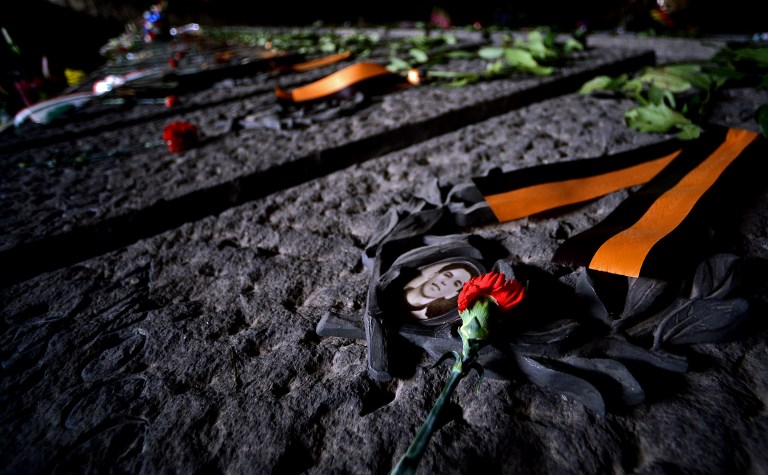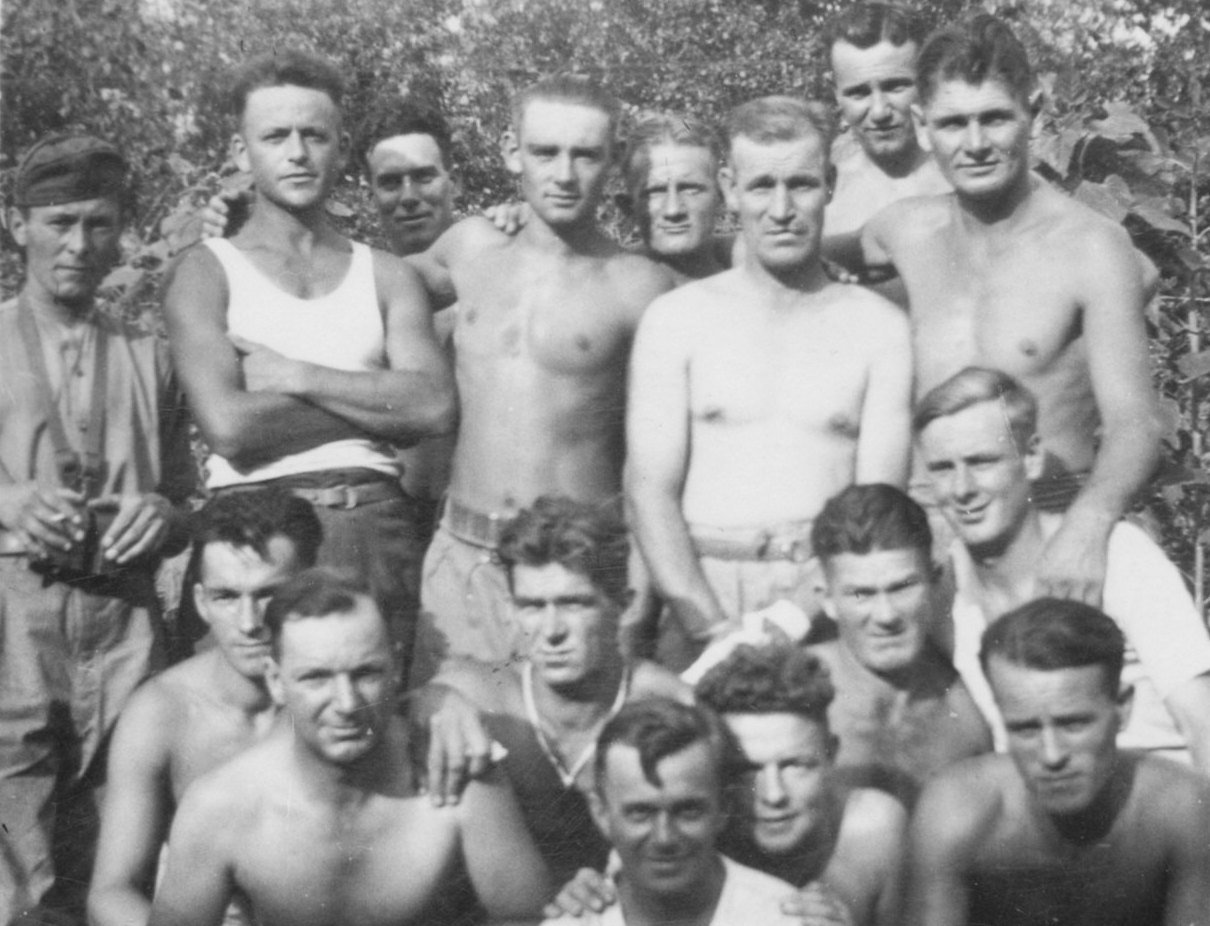Italian film tells uncomfortable story of partisan WWII massacres

A new film is shining an uncomfortable light on the fate of thousands of Italians killed in massacres on the Yugoslav frontier at the end of the Second World War.
Red Land (Rosso Istria) recounts events that for decades were only commemorated by neofascists, showing that things were not as black and white as previously thought and provoking a wave of reactions on social media.
From 1943 to 1947, between 5,000 and 10,000 Italians were murdered in the region around Trieste, on today's border with Slovenia, as it was reconquered by Tito's Yugoslav partisans, with victims often thrown alive into deep sinkholes known as "foibe". Another 250,000 people fled their homes.
What began as a "cleansing" of police and civil servants associated with the fascist regime by Yugoslav and Italian partisans later became the systematic murder of Italians.
READ ALSO:
-
The 'forgotten' resistance: The Italian partisans neglected by history books
-
Holocaust hero or Nazi collaborator? The confusing story of 'Italy's Schindler'
-
Mussolini museum project awakes demons of Italy's past
Immediately after the war, Italy wanted to turn the page on its fascist history and the crimes committed by its forces in Yugoslavia as quickly as possible.
That meant that the massacres carried out by partisans were for years only commemorated by those nostalgic for Mussolini. It was only in 2004 that the right-wing government of Prime Minister Silvio Berlusconi initiated a national day of remembrance for the massacres.
In 2005, Italy awarded a posthumous medal to Norma Cossetto, a 23-year-old student and daughter of a local fascist official, who was raped, tortured and murdered by Yugoslav and Italian partisans in October 1943.
Her story "is a metaphor" for the fate of all the other victims of the massacres, the film's producer Alessandro Centenaro told AFP.
"Yes, Norma was killed because she was fascist. But also because she was a woman, educated and Italian," Centenaro said.
"There are many sides to this story, like the character of Giorgio, the deserter who joins the Yugoslav partisans to get rid of the fascists and ends up a victim himself," said the film's Italian-Argentine director Maximiliano Hernando Bruno.
The film recounts one of the partisans' murder methods: prisoners would be shot in the head on the edge of a "foiba", dragging others still living to whom they were tied to their deaths.
It premiered at this year's Venice Film Festival and also screened this month at the Italian Senate, where it was hailed by politicians from left and right.
READ ALSO: Six lesser-known World War II sites to visit in Italy

Comments on the film's Facebook page hail the "powerful story", which "finally does justice to the victims" and "shines a light on a truth that has been hidden for too long", which "should be shown in all schools".
But some internet commentators have also accused the director of being fascist or revisionist. Hernando Bruno dismisses such critics as "provocateurs who haven't seen the film".
Some say that the film is being "boycotted" because it has received little coverage in Italian media.
Unusually, right-wing Interior Minister Matteo Salvini on Monday shared a list of the around 30 cinemas showing the film with his millions of followers on social media.
"For decades, left-wing politicians and intellectuals have done everything to hide this truth," Salvini said. "Go and watch it and pass the word along, so that those who were killed simply for being Italian may at least be honoured by our memory."
READ ALSO: How Italians helped Allied prisoners escape during WWII

By AFP's Fanny Carrier
Comments
See Also
Red Land (Rosso Istria) recounts events that for decades were only commemorated by neofascists, showing that things were not as black and white as previously thought and provoking a wave of reactions on social media.
From 1943 to 1947, between 5,000 and 10,000 Italians were murdered in the region around Trieste, on today's border with Slovenia, as it was reconquered by Tito's Yugoslav partisans, with victims often thrown alive into deep sinkholes known as "foibe". Another 250,000 people fled their homes.
What began as a "cleansing" of police and civil servants associated with the fascist regime by Yugoslav and Italian partisans later became the systematic murder of Italians.
READ ALSO:
- The 'forgotten' resistance: The Italian partisans neglected by history books
- Holocaust hero or Nazi collaborator? The confusing story of 'Italy's Schindler'
- Mussolini museum project awakes demons of Italy's past
Immediately after the war, Italy wanted to turn the page on its fascist history and the crimes committed by its forces in Yugoslavia as quickly as possible.
That meant that the massacres carried out by partisans were for years only commemorated by those nostalgic for Mussolini. It was only in 2004 that the right-wing government of Prime Minister Silvio Berlusconi initiated a national day of remembrance for the massacres.
In 2005, Italy awarded a posthumous medal to Norma Cossetto, a 23-year-old student and daughter of a local fascist official, who was raped, tortured and murdered by Yugoslav and Italian partisans in October 1943.
Her story "is a metaphor" for the fate of all the other victims of the massacres, the film's producer Alessandro Centenaro told AFP.
"Yes, Norma was killed because she was fascist. But also because she was a woman, educated and Italian," Centenaro said.
"There are many sides to this story, like the character of Giorgio, the deserter who joins the Yugoslav partisans to get rid of the fascists and ends up a victim himself," said the film's Italian-Argentine director Maximiliano Hernando Bruno.
The film recounts one of the partisans' murder methods: prisoners would be shot in the head on the edge of a "foiba", dragging others still living to whom they were tied to their deaths.
It premiered at this year's Venice Film Festival and also screened this month at the Italian Senate, where it was hailed by politicians from left and right.
READ ALSO: Six lesser-known World War II sites to visit in Italy

Comments on the film's Facebook page hail the "powerful story", which "finally does justice to the victims" and "shines a light on a truth that has been hidden for too long", which "should be shown in all schools".
But some internet commentators have also accused the director of being fascist or revisionist. Hernando Bruno dismisses such critics as "provocateurs who haven't seen the film".
Some say that the film is being "boycotted" because it has received little coverage in Italian media.
Unusually, right-wing Interior Minister Matteo Salvini on Monday shared a list of the around 30 cinemas showing the film with his millions of followers on social media.
"For decades, left-wing politicians and intellectuals have done everything to hide this truth," Salvini said. "Go and watch it and pass the word along, so that those who were killed simply for being Italian may at least be honoured by our memory."
READ ALSO: How Italians helped Allied prisoners escape during WWII

By AFP's Fanny Carrier
Join the conversation in our comments section below. Share your own views and experience and if you have a question or suggestion for our journalists then email us at [email protected].
Please keep comments civil, constructive and on topic – and make sure to read our terms of use before getting involved.
Please log in here to leave a comment.